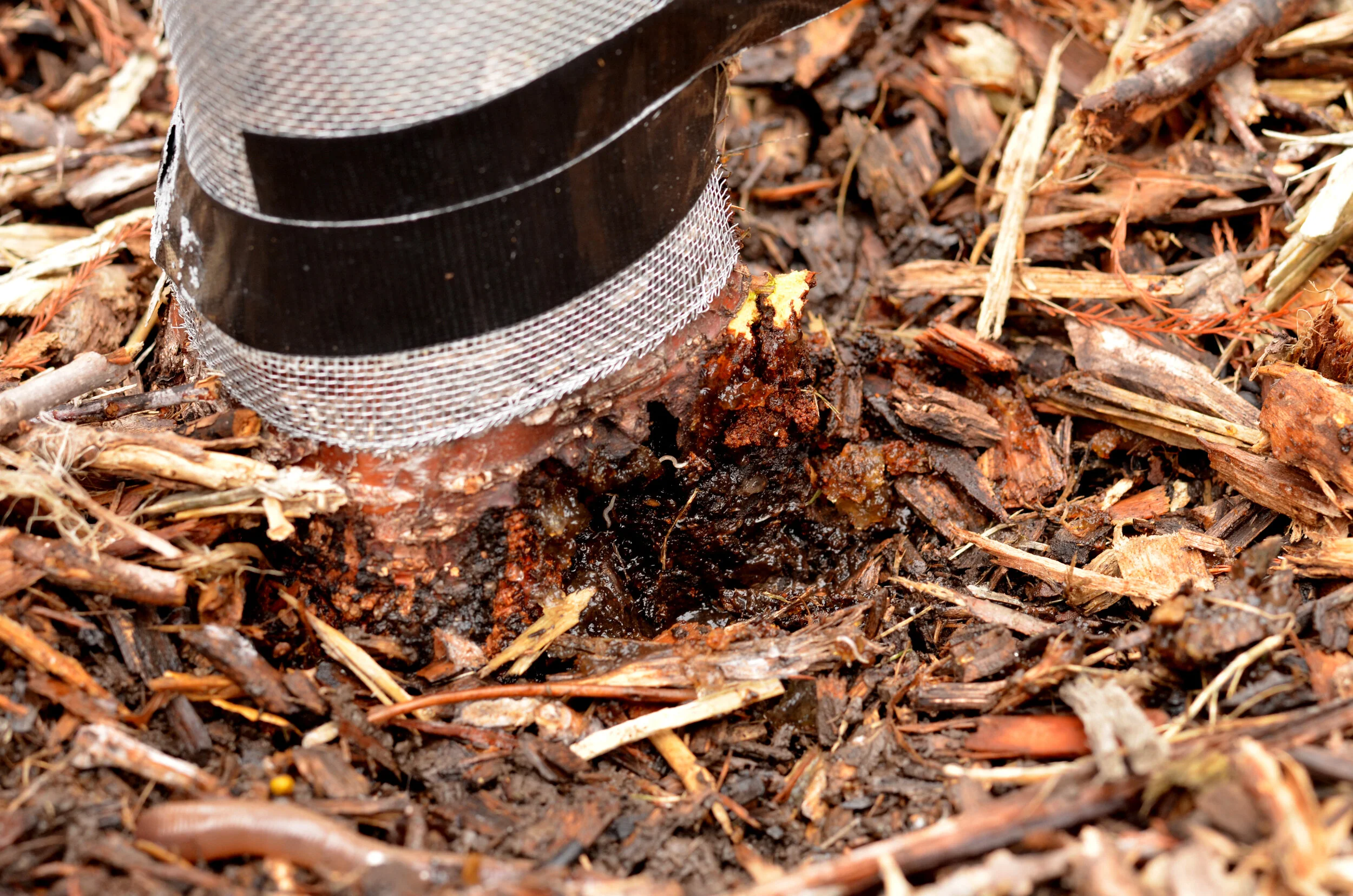The Greater Peach Tree Borer (Synanthedon exitiosa) causes damage to stone fruit trees, especially peach trees. The larvae burrow into the bark and feed on the sap. Young trees can be completely girdled and will eventually die, while older trees are debilitated. Trees have a greater susceptibility to other insects and diseases after a Peach Tree Borer attack.
For region-specific information, please contact your local Giving Grove partner. If you would like more information like this sent straight to your inbox, consider subscribing to The Serving, The Giving Grove’s quarterly newsletter.
Larvae State (Photo courtesy of USDA AgResearch Magazine)
Tree damage (Gummosis) from Peach Tree Borer
Appearance:
Larvae vary from 1.25 to 3.5cm (0.5-1.5”) in length and are white with a brown head.
Adult females are metallic dark blue in color with opaque forewings and clear hindwings with a wingspan of 3.5cm (1.5”) and have a wasp-like appearance.
Adult males are slightly smaller and slenderer, and both pairs of wings are clear and have a smaller wingspan (2.25cm, 1”). Males also have a wasp-like appearance.
Damage:
The Peach Tree Borer attacks all stone fruits, primarily peaches (anything within the Prunus genes).
Larvae burrow into the bark on the trunk, usually entering from an existing wound on the bark. The borer furrows on the trunk from 7.5cm (3”) below the soil surface to 25cm (10”) above the ground and feeds on the cambium.
Areas attacked often have masses of gum (sap) mixed with frass (excrement from pests) exuding from the bark.
Timing:
Larvae (borer) overwinter in trees and begin feeding in April.
Adult moths begin to emerge in late May to early June, peaking in late July or August, and declining in September.
Eggs are laid from July to early August.
Feeding begins in August or September until hibernation in November.
There is typically one generation of peach tree borer per year.
How to Avoid:
Planting garlic chives (or any of the Allium family) at the base of the tree can help deter the insect.
Healthier trees, although attractive to the Peach Tree Borer, can sustain damage better than unhealthy trees.
Pheromone traps are helpful in breaking mating cycles and lessen the number of insects.
Wrap the base of the tree with window screen to prevent egg-laying.
How to Treat:
Spray a 1% neem solution on the trunk of the afflicted trees from late June through September.
Hand-worming (using a knife to dig out the larvae) is effective in smaller plantings.
Parasitic nematodes applied in late April, early May or early September can help to control larvae.
Why it Matters:
Young trees can be completely girdled and will eventually die, while older trees are debilitated.
Trees have a greater susceptibility to other insects and diseases after a Peach Tree Borer attack.
Sources: MyIPM, University of California IPM, Cornell University Extension, Purdue Extension, and The Holistic Orchard



